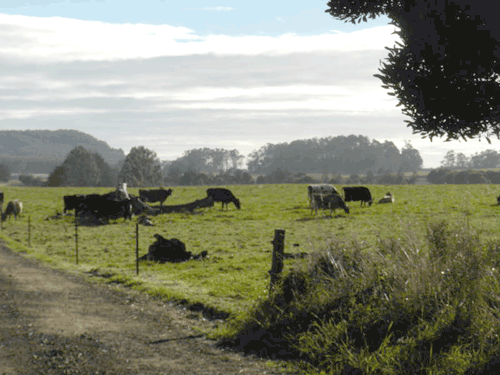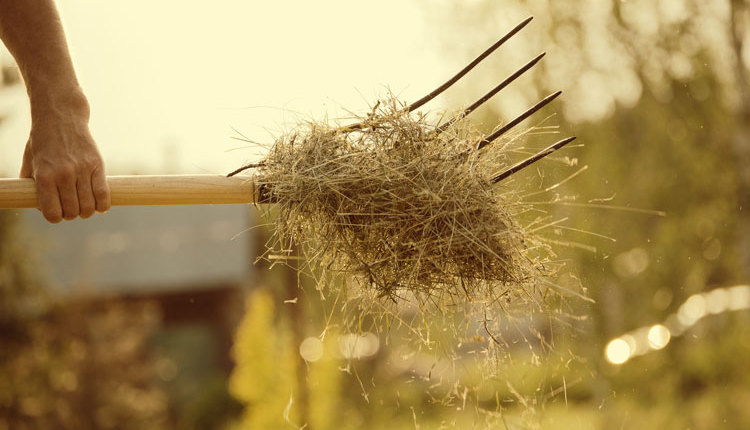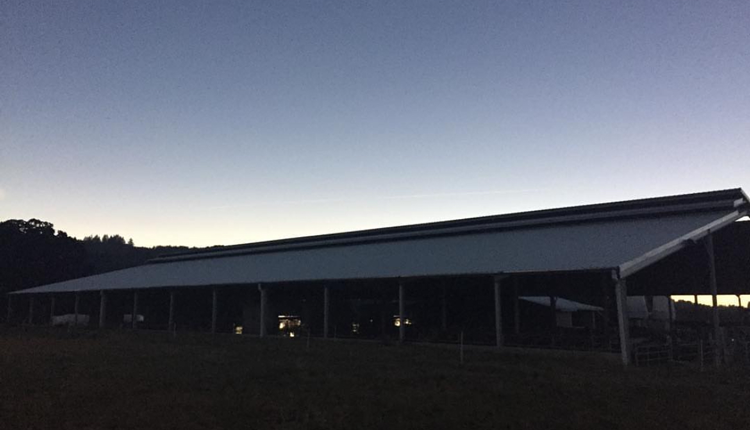"Wow, the Holsteins here are smaller than the ones back home!" I said while walking to work with a co-worker.
"You must be American. Those black and whites are Friesians, not Holsteins."
This was one of the biggest shocks I have had here in Tasmania. I did not know that Holsteins had another name. Turns out Friesians are nothing more than smaller Holsteins that are better suited to a grass-based-diet. Back in America, I am more familiar with the large Holsteins that seem to dwarf my small frame. But, here, I can see over all the cows, and most of them only come up to my ribcage.

In my beginning dairy science class, I was taught that one of the most important ideals on a dairy farm is production. More milk means more money. In Tasmania, average milk production per cow is less than it is back in the United States. I do think it is important to note that most of the dairy farms in Tasmania run as a pasture-based system.
An advantage of this grass-based diet approach is that most of the cows feed is grown on the farm, and requires little preparation. I still do not possess the ability to look at the grass and understand its nutritional value. Sometimes, my boss and I will walk around the pasture, and he will ask what I think of the grass. I will get down on my knees to have a closer look. I only see grass, while my boss will do the same thing and give a fully analyzed description. Simply by glancing at the grass he can tell if it needs additional fertilizer, more cows to clean up the extra spots, or if the grass needs to be divided into smaller pastures. I never knew grass talk. It is simply amazing!
The herd at Shoestring is a third mix; one part Friesian, one part Jersey, and the rest are cross-breeds. The Friesian Holstein breed constitutes nearly 70 percent of all the dairy cows in Australia. The next most popular breed is Jersey, followed by Australia's own breed, the Illawarra. To be honest, I had to look up what an Illawarra was, and I eagerly look forward to my first meeting with one. Most of the breeding in Australia is accomplished through artificial insemination. Similar to the U.S., Australian farmers have access to some of the best genetics in the world.
Tasmania is home to 140,000 dairy cows, which is third in Australia, behind New South Wales and Victoria, for total dairy cows. The dairy industry in Australia continues to grow, with a production value of $3.4 billion, ranking third behind beef and wheat in agriculture commodities. It is estimated that 40,000 people work on dairies and manufacturing plants in Australia.
Turns out those little Friesians are pretty important. I'm glad I found out it wasn't just a Holstein, but I may start calling the cows back home Friesians, just to see my classmates' reactions to the Holstein's second name!
 This is the fourth feature in a series of articles written by Anna Gibson, a Washington State University Student, who is working on a dairy in Tasmania, Australia.
This is the fourth feature in a series of articles written by Anna Gibson, a Washington State University Student, who is working on a dairy in Tasmania, Australia.
"You must be American. Those black and whites are Friesians, not Holsteins."
This was one of the biggest shocks I have had here in Tasmania. I did not know that Holsteins had another name. Turns out Friesians are nothing more than smaller Holsteins that are better suited to a grass-based-diet. Back in America, I am more familiar with the large Holsteins that seem to dwarf my small frame. But, here, I can see over all the cows, and most of them only come up to my ribcage.

In my beginning dairy science class, I was taught that one of the most important ideals on a dairy farm is production. More milk means more money. In Tasmania, average milk production per cow is less than it is back in the United States. I do think it is important to note that most of the dairy farms in Tasmania run as a pasture-based system.
An advantage of this grass-based diet approach is that most of the cows feed is grown on the farm, and requires little preparation. I still do not possess the ability to look at the grass and understand its nutritional value. Sometimes, my boss and I will walk around the pasture, and he will ask what I think of the grass. I will get down on my knees to have a closer look. I only see grass, while my boss will do the same thing and give a fully analyzed description. Simply by glancing at the grass he can tell if it needs additional fertilizer, more cows to clean up the extra spots, or if the grass needs to be divided into smaller pastures. I never knew grass talk. It is simply amazing!
The herd at Shoestring is a third mix; one part Friesian, one part Jersey, and the rest are cross-breeds. The Friesian Holstein breed constitutes nearly 70 percent of all the dairy cows in Australia. The next most popular breed is Jersey, followed by Australia's own breed, the Illawarra. To be honest, I had to look up what an Illawarra was, and I eagerly look forward to my first meeting with one. Most of the breeding in Australia is accomplished through artificial insemination. Similar to the U.S., Australian farmers have access to some of the best genetics in the world.
Tasmania is home to 140,000 dairy cows, which is third in Australia, behind New South Wales and Victoria, for total dairy cows. The dairy industry in Australia continues to grow, with a production value of $3.4 billion, ranking third behind beef and wheat in agriculture commodities. It is estimated that 40,000 people work on dairies and manufacturing plants in Australia.
Turns out those little Friesians are pretty important. I'm glad I found out it wasn't just a Holstein, but I may start calling the cows back home Friesians, just to see my classmates' reactions to the Holstein's second name!
 This is the fourth feature in a series of articles written by Anna Gibson, a Washington State University Student, who is working on a dairy in Tasmania, Australia.
This is the fourth feature in a series of articles written by Anna Gibson, a Washington State University Student, who is working on a dairy in Tasmania, Australia. 










